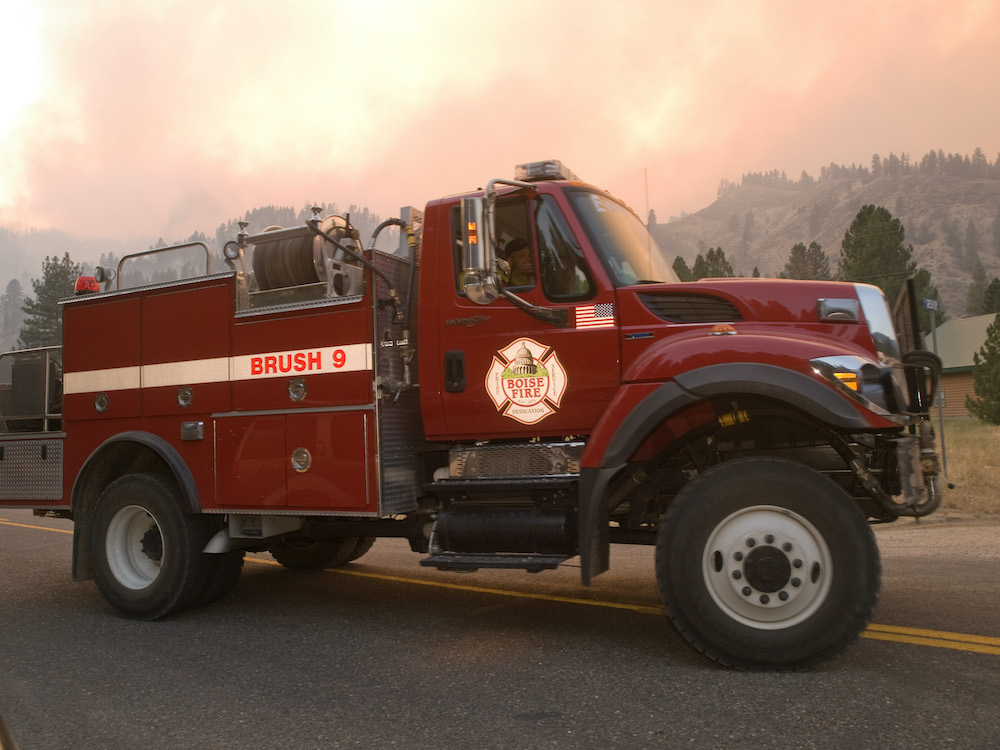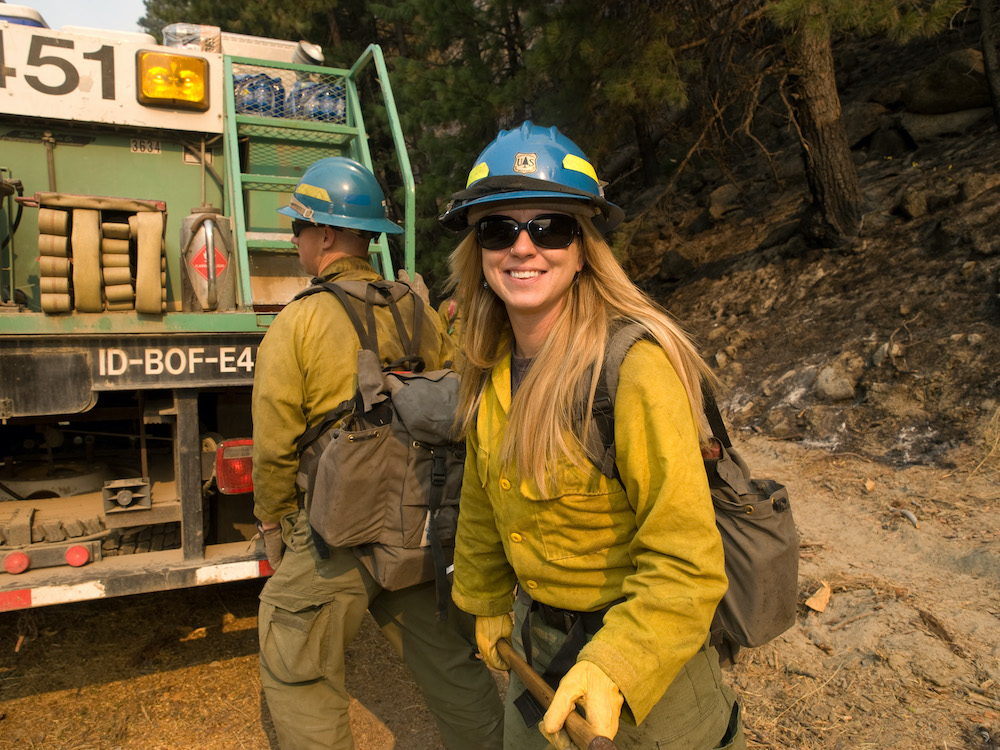Wildland fire engines vary in the number of people they can carry and the amount of water they can hold. Smaller engines are about the size of a pickup truck and can carry up to 300 gallons of water. They are staffed by two to five firefighters. These engines operate well in mountainous terrain, can maneuver in tight spaces, and are typically used in forested ecosystems where nearby water sources can be used to fill up their small tanks.
Super Heavy engines are very large, rugged vehicles with extreme off-road capabilities and a tank that can carry up to 2,000 gallons of water. Often accompanied by water tenders, Super Heavy engines are located in remote areas, allowing fast response times in the most rugged areas of high fire activity. Just one Super Heavy wildland fire engine crew is capable of suppressing more than five miles of rangeland fireline in one work shift.












